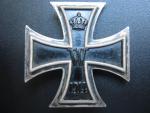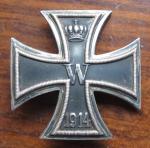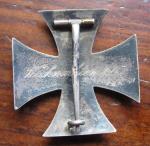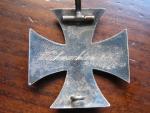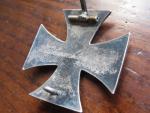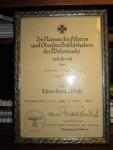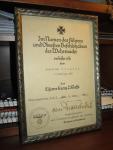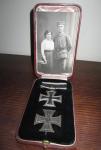-
Posts
555 -
Joined
-
Last visited
Content Type
Profiles
Forums
Blogs
Gallery
Events
Store
Everything posted by Brian R
-
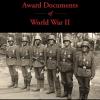
EK All Eras Field Surgeons and the EK2
Brian R replied to Robin Lumsden's topic in Germany: All Eras: The Iron Cross
There were also details in OKH's regulations that spoke to field hospitals having the ability to award EKs to the severely wounded, especially when a soldier's wounds were life threatening. However, even in these circumstances, the hospital had to be given the approval by the high command. So, a doctor could award the EK, but it was still based on the authorization of a higher authority. He typically did not have the right to make the award himself. (1) Authorized to issue awards to wounded in military hospitals are: in the area of deputy Generalkommando the commanding general of the deputy Generalkommando. In an occupied area or operational area the commanders of the senior medical officers to whom the military hospitals are directly subordinated. (2) In all military hospitals a reasonable number of awards are to be stored so that in urgent situations the E.K. 2, on the telephoned directive of the awarding office, can be issued by the chief doctor. Requests in the area of deputy Generalkommando are to be directed to the Chef H Rüst u BdE, and for other military hospitals it is the superior awarding office. -
It's a tough one to photograph but I will follow up. It was a MAX Show pick-up. I was there to sell, and just after I sold a choice medal bar to Don, this cross came into view. Even without knowing the details about the division and its SA, I knew I couldn't pass it up. Luckily I had the money from the medal bar sale, although the purchase did ultimately go against plans. It's a KAG and here is the obverse...
-
Interesting, as I never really thought it could have come from the unit. Was definitely thinking of a sweetheart of family member.
-
Hi Guys - I posted this one on the WAF last year but it is entirely appropriate to show it here again for the Christmas holiday. It is vaulted and marked 800 on the pin - undoubtedly a gift to a recipient. One of my favorites...
-
Ah, very cool. As I am a WWII guy, I don't have much research material on WWI troops. These maps, and the information you shared, are consistent with the one book I do have - "251 Divisions" states that the division was deployed northeast of Reims at the time (around June 10th, so the May 31st switch shown on the map jives). So, I'm guessing the award is related to trench raiding or some kind of fast attack on or just before the 17th. Oh, and its an engraved EK1, but don't tell Chris.
-

EK All Eras Field Surgeons and the EK2
Brian R replied to Robin Lumsden's topic in Germany: All Eras: The Iron Cross
Indeed, we debated this in detail on the WAF today. OKH determined circa 1941 that all soldiers who suffered one, severe wound that would make him eligible for the Silver or Gold Wound Badge (loss of an eye, hand, leg, etc.) would be eligible for the award of the Iron Cross 2nd Class, provided he didn't already have one. These documents are part of the awarding process - they are telling higher commands that a soldier's wounds fit the criteria of this specific regulation. The awards of these "wound" EKs were ultimately and typically processed by the applicable Armeekorps/Wehrkries in which a soldier was subordinate at the time (generally while convalescing with an Ersatz unit). -

EK 1939 Iron Cross 2nd Class from the Sitzkrieg
Brian R replied to Brian R's topic in Germany: All Eras: The Iron Cross
Yes, it would be SO COOL to find the Vorschlagsliste that detailed or described why an award like this was made. These Sitzkrieg awards are interesting - I actually have three of them - but I have found virtually nothing out there that describes, in any kind of detail, the skirmishes and actions of 1939/40. The most information I have ever seen is related to the initial fighting, when France actually invaded the Saar. See this... Dated October 26, 1939, this award of the Iron Cross Second Class is likely related to the French invasion of the Saarland. The French were to aid the Poles by launching an attack across the German border that could possibly divert troops away from invasion of Poland. The attack began on September 7th and continued through September 30. The German 1. Armee was unable to put up any significant resistance and pulled back to positions along the West Wall. Overall, the French advanced about five miles but decided to pull back due to fears of a German counteroffensive once the campaign in Poland had come to an end. From October 16 through 24, the Germans in the area launched a number of local counterattacks and pushed the French back across their own border. Among the troops fighting at the time was Uffz. Johannes Böll of Infanterie Regiment 172, 75. Infanterie Division. His award document is signed by Generalleutnant Ernst Hammer, division commander from September 1939 through Septemebr, 1942. Böll went on to win the Iron Cross First Class in August, 1940 following the campaign in the West. He was, however, killed in action on the Western Front in the fall of 1944 while fighting with 15. Armee. -
Yep, Chris is absolutely right. This is a schwerverwundete based on regulations stating that the recipient of a Silver or Gold Wound Badge for one wound was automatically eligible for an EK2 (provided he didn't already have one). The two awards of the EK2 in this case are very likely a clerical issue. The second one came from Wehrkreis X, the home area for 30. Infanterie-Division. So, it makes sense that the EK2 would have ultimately come from there and its actually a bit surprising that Wehrkreis I even processed one. I have seen these heavy wound EKs take a long time to be processed (many months, even years), so an award in October after a wound in August is pretty fast. Your guy suffered heavily while pushing into the Soviet Union with Army Group North.
-
Here is an interesting Iron Cross award - one you won't find too often. It is an award document for the Iron Cross Second Class to a Gefreiter from Infanterie-Regiment 266, 72. Infanterie-Division. The division was stationed on the French border during the winter of 1939/40 and the "phoney war". It was processed on OKH level on March 6, 1940 and includes the signature of von Brauchitsch. Given the division's deployment in this area at the time, it is likely that this award was made as result of border skirmishes during the Sitzkreig, a rather unique award and bit of circumstances.
-
Thanks for the responses. I think my understanding of these units is a bit off. I was under the impression that there were a limited number of Sturm units and that were relatively independent - that they were often attached to divisions or even higher commands. These were the units produced based on the success of the Rohr group. However, I see now that there were all sorts of variations, some larger than others and they could be organized in variable ways. So, in this case, it seems reasonable to assume the Sturm Abteilung of 239 Division was a unit formed from the division? By 1917, did most or all divisions have some kind of Sturm unit - whether battalion, company or even platoon size?
-

EK All Eras Welcome Brian R...
Brian R replied to Chris Boonzaier's topic in Germany: All Eras: The Iron Cross
Guys - Thanks for the welcoming messages. I look forward to talking more about EKs on this board and I really like the idea of discussing the medals and the award documents in one place. Let's have some fun here in 2015! Thanks again, Brian -
Hi Guys - According to "251 Divisions"... “The 239th Division belonged to the series of 12 divisions (231st to 242nd) formed in Germany at the beginning of 1917, a strong proportion (50%) of the 1918 class. Recruited from the 11th and 18th Corps Districts (electorate of Hesse, Thuringia, and Hesse-Nassua, and the Grand Duchy of Hesse”. In the book, there is no mention of an SA but I have seen reference to it in other places. So, my question is this... were the SA and the division formed simultaneously? In other words, was SA intended to be organic to the division or was it, coincidentally, attached to the division after the division itself was formed? The formation of these divisions is somewhat late and the SA were relatively "established" at this time. So, I'm curious if the formation of these divisions incorporated the inclusion of such specialty units (whether SA or something else). Thanks in advance! Brian
-
Very nice Spange citation, Jim (and apologies for my delay in responding). I like this citation in that it is related to the first days of Fall Rot. I have seen a lot of EK documents and wound citations to soldiers who distinguished themselves and/or suffered during this fighting. The effectiveness of the French resistance surprised the Germans, especially since the French had suffered such losses during the preceding weeks.
-

EK 1914 Beaten but named EK1
Brian R replied to Chris Boonzaier's topic in Germany: All Eras: The Iron Cross
Very nice crosses. The beaten/replaced pin on yours, Chris, is really great and speaks to an awarded EK that was worn and cherished. -
A great thread this is! Dave - I have never seen an EK Vorschlagsliste from WWI so this is very cool (I have seen a couple of listes for other Imperial awards though). I have four of them or so from WWII and I have always wanted to see what they looked like and how they were (typically) formatted during the 1914-1918 period. Great stuff!! Brian
-

EK 1914 The EK1 in wear...
Brian R replied to Chris Boonzaier's topic in Germany: All Eras: The Iron Cross
-
Yes, even in WWII when the wound badge did exist there appears to have been a strong connection between combat wounds and the Iron Cross (apart from the automatic Silver and Gold awards for Schwererwundete processed on Wehrkreis level)). I'm convinced that a substantial amount of EKs, especially EK2s, awarded during the Second World War were related to combat wounds. Not surprisingly, acts of bravery often made a soldier a casualty. However, there are many examples where an EK2 was given to a wounded soldier, even if no specific act of bravery occurred. I'd be quite surprised if this wasn't the case in WWI, given how long the war lasted and the related amount of wounds/casualties. Dave -That list you show is fascinating. I'd love to see a whole page (or front page) with heading, even if informally written.
-

EK 1914 Machine Gunner Document
Brian R replied to Chris Boonzaier's topic in Germany: All Eras: The Iron Cross
These are great documents, Chris. I'm not sure I have ever seen these before. I have a MG Wound Badge citation and would love one of these, especially that Saxon one. -
Hi Aaron - The marking is for Johann Wagner & Söhn of Berlin. Congratulations on your first Iron Cross. They really are a lot of fun to collect, especially when you can study the background as to how and why they were awarded. I have a few original 1939 EK1s that I will be selling. Send me a PM if you'd like more info.
-

EK 1939 EK2 doc on its own
Brian R replied to Jock Auld's topic in Germany: All Eras: The Iron Cross
A nice citation, indeed. And likely related to the fighting on The Kuban Bridgehead in the spring of 1943. -
These crosses can be so mysterious, it really could be anything. I could certainly buy the hospital theory having nothing else to go by. That said, I think your conclusion is the most logical. It clearly is Sogorow and not Sagarow like I initially posted. Yes, it could be a name - I have seen single last names with dates on crosses before - but the date combined with the Ukrainian town, and the August 1915 front line shown on the map, are pretty good clues. Your logic is quite reasonable and I feel pretty safe going with this theory. Thanks for replying!


